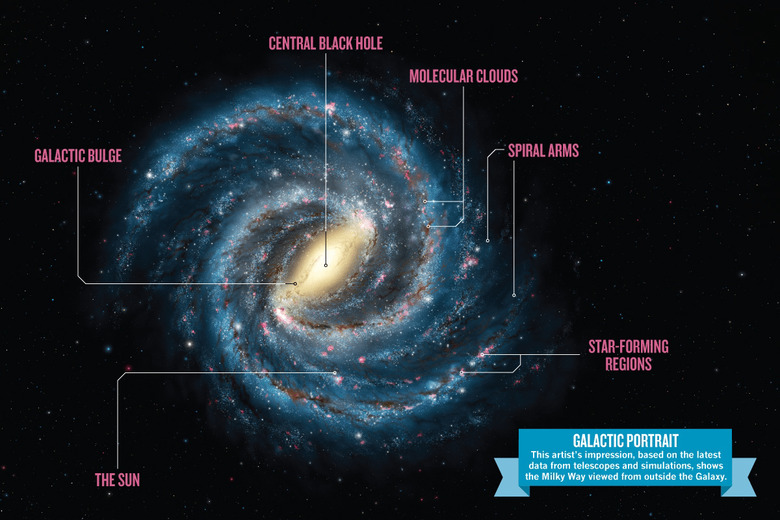Milky Way's Stars Found Prone To Leaving Home
Significant movement in star orbits around our Milky Way galaxy have been found in a study that spanned 4-years and nearly 100,000 stars. "In our modern world, many people move far away from their birthplaces," said lead author and NMSU astronomy graduate student Michael Hayden, "now we're finding the same is true of stars in our galaxy." It would appear that around 30% of the stars in our Milky Way have traveled a sizable distance from their birthplaces to completely different orbits over long periods of time.
Scientists have used the SDSS Apache Point Observatory Galactic Evolution Explorer (APOGEE) spectrograph to observe the stars of our Milky Way over the past four years. "From the chemical composition of a star, we can learn its ancestry and life history," said Haden. Not only are stars moving, but the entire chemical makeup of our galaxy is changing, and changing constantly.
Below you'll see an animated map of our Milky Way showing how stellar orbits can change. Illustrations here are VIA Dana Berry/SkyWorks Digital, Inc.; SDSS collaboration.
Information here is derived from spectra, measuring the amount of light each aster gives off at each different wavelength.
Evidence of migration from one part of the galaxy to the other have been seen in some stars closer to our home star, the Sun – it's now clear that migration happens everywhere.
At this time, scientists do not know precisely why stars move in or out along pathways radially around our galaxy. They suggest it's possible that it's all due to irregularities in the galactic disk.
It's the compositions of these stars that indicate they were formed in different locations in our galaxy than they were discovered in more recent times.
According to Jon Holtzman, NMSU astronomy professor involved in the study published this week, it's "chemical enrichment" that's making our galaxy change.
"Stars create heavier elements in their cores," said Hotzman, "and when the stars die, those heavier elements go back into the gas from which the next stars form."

ABOVE: Milky Way portrait via author Ann Finkbeiner from the 2012 paper "Galaxy formation: The new Milky Way", doi:10.1038/490024a
For more information on the study published this week, see the paper "Chemical Cartography with APOGEE: Metallicity Distribution Functions and the Chemical Structure of The Milky Way Disk." This paper has many authors, including Michael R. Hayden, Jo Bovy, and Jon A. Holtzman and many, many others, all of whom can be found in the paper under code doi:10.1088/0004-637X/808/2/132.
